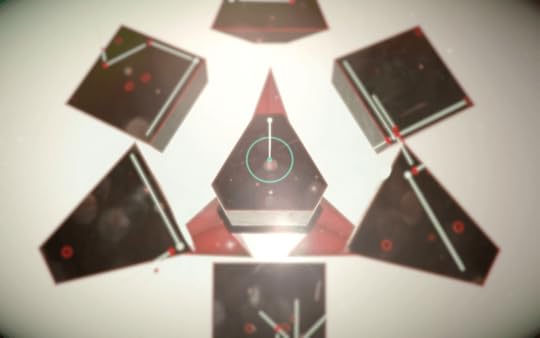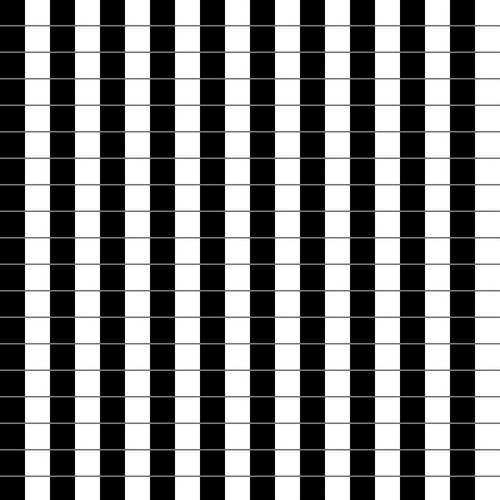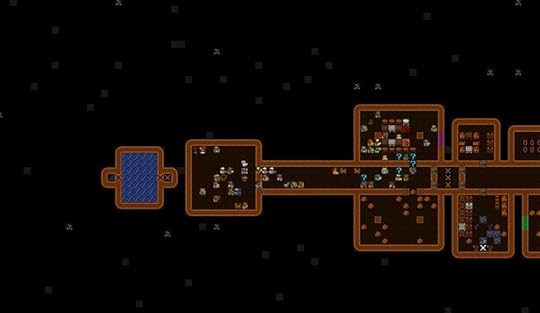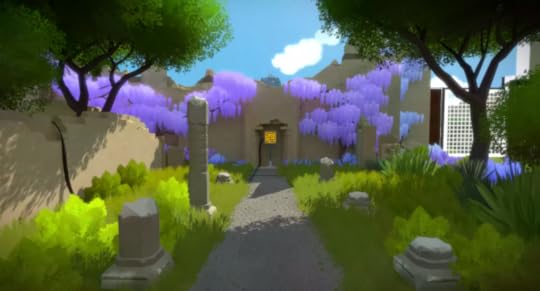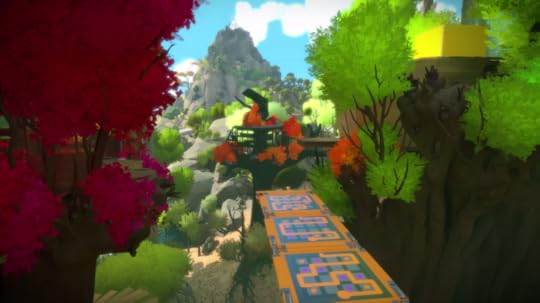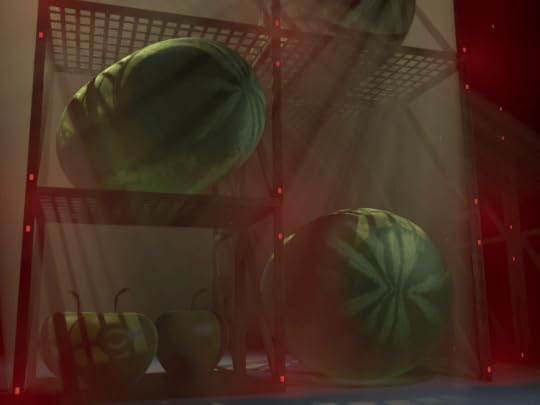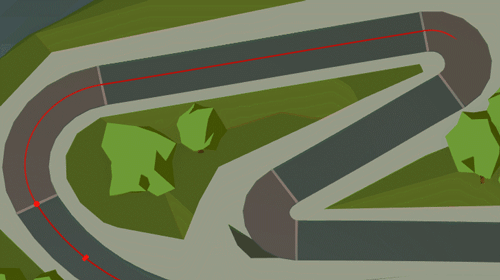Kill Screen Magazine's Blog, page 162
February 12, 2016
Stupid Hackathon celebrates the creativity of useless tech
San Francisco’s residents can’t escape the blossoming tech start-up culture, no matter how hard they try. It’s a strange place where it’s not out of the ordinary to hear of another “techie” (an affectionate term San Franciscans use for the influx of tech workers) pitching their app to an unassuming local at a public place, be it yet another dating app or a Yelp-esque knock off. Apps and start-ups are everywhere in San Francisco—techies alongside ‘em, fiending to throw their business cards at you even while you’re enjoying a Japanese curry at the city’s outskirts.
The most bewildering part of living in the Great 2010s Tech Boom of the Bay Area is that none of these apps seem practical. I already have Yelp, there’s already Tinder, and so on. At the third annual NYC-based Stupid Hackathon, all things pointless and terrible are at the forefront, but unlike San Francisco’s oversaturated app culture, that’s precisely the point.
All things pointless and terrible are at the forefront
At the New York University-hosted event, photoshopped images of George W. Bush wearing an Oculus Rift (with a looming ‘Mission Accomplished’ banner behind him) greeted Stupid Hackathon participants and attendees on February 6th, 2016. The Stupid Hackathon, shortened from “Stupid Shit No One Needs and Terrible Ideas Hackathon,” annually features a wide array of tongue-in-cheek useless technology (and to a stranger extent—food). In traditional hackathon fashion, participants register in advance, and then have a set amount of time on the day of the event to create something on the spot. In most hackathons, creations coincide with a theme or category, such as Stupid Hackathon’s “Artisanal Ad Networks” or “Ayn Rand.”
And nothing says “Artisanal Ad Networks” like Miklos Pataky and Carl Jamilkowskia’s Google Chrome-extension NonAd Block, which very obtrusively blocks everything but ads on a given webpage. NonAd Block is just one example of the onslaught of hysterical needless projects at the forefront of Stupid Hackathon. Others include JB Rubinovitz’s “Unfriend the Poors” (a free service to help you unfriend all those pesky poor acquaintances on Facebook), Matt Romein’s bizarre interpretation of The Glass Menagerie (a classic play he has never “seen nor read”), Mikei Huang’s virtual reality experiment of watching a fireplace… on a television, and Shakie, a camera app by Sam Sadtler that will only snap a photo if you shake your phone vigorously. Stupid Hackathon is only full of the most obtusely realized ideas.
Taking a step back from the weird, rather than being yet another by-the-books hackathon, Stupid Hackathon flips the expectations of the atypical corporate-sponsored events to show off the goofy, more creative side of the tech world. A wave of technological entrepreneurs that aren’t afraid to poke fun at technology’s (sometimes) absence of genuine purpose. At Stupid Hackathon, the useless-yet-creative ideas conjured up by its creators are even often mashed together with art—to help shape an entirely new identity to the true lengths we can take technology and its broader ideas. You know, like making a dick that squirts out soylent.
For more ultra-low-capacity USB drives and Personal Pee Companions, check out the fruits of Stupid Hackathon’s participants’ labor here .
Kanye West’s videogame is gonna be very Kanye West
Yesterday, Kanye West debuted his new album, The Life of Pablo, at Madison Square Garden. The “listening event” is a long-standing power-move in the most entrenched corners of the record industry—a complementary-wine-and-shrimp sort of affair, where people stand around and maybe take notes on a record while the artist either stares at them intently or, like, falls asleep in a corner, surrounded by well-wishers. Ye’s event represents a reinvention of the form for the Spotify era, turning an insiders-only thing into a streaming-platform cosign, a fashion show, a free, democratized listening event, and an actual documentary of how boring and weird those events actually are. Watching Yeezy Season 3 (which you still can, albeit on loop) is essentially watching a bunch of bored people stand around and be seen. People on stage: bored, being seen. In the audience: bored, being seen. There are lots of shots of people texting.
another thing to be curated and filtered into a new expression of his own id
Anyway, it’s also, as with anything Ye does, a peek into his meticulously curated creative climate, which is apt to include anything at any given moment, and which now apparently includes videogames. He first mentioned his interest in the form last year, but yesterday that became lot more realistic when he premiered a video for “Only One,” which, like the song of the same name, explores his mom’s afterlife. (That song, interestingly, proved to be an artistic dead end, from a period of collaboration with Paul McCartney that West appears to have used mostly to purge the ugly, nihilistic streak of Yeezus and move toward the lively gospel tones of Life of Pablo.) Visually, the game traffics in the bold, maximalist mold of his “Power” or “Bound 2” videos, but little else is known of it, including who designed it, if anyone. As Ye said in between his two airings of the trailer, “I go out and meet with everybody in San Fran, and they’ll diss the fuck out of me. And I’ll be like, ‘I wanna make a game,’ and they’ll be like, ‘Fuck you.’” (If anybody who worked with or spoke with Yeezy has more details, I’m all ears.)
Much more than that is hard to surmise. Yeezy works in fits and starts; The Life Of Pablo, for example, was apparently finished last year, under a different name. He has also claimed exactly once to be running for President. He has never expressed an interest, lyrically or in interviews, in videogames as a form, although his interest in most culture is only as a means for inspiration, as another thing to be curated and filtered into a new expression of his own id. He doesn’t appear to follow sports, for example, but will occasionally summon a Barry Bonds or Michael Jordan metaphor for all-caps GREATNESS. Also intermittently pinned to his mood board: the indie musician Jon Brion, the late Apple CEO Steve Jobs, former NBA commissioner David Stern, a Corbusier lamp, boats, The Truman Show (1998), font design, and so on. As a musician, Kanye has utilized this web of influences to transform pop music; as a mixed media artist, he’s got a less-than-stellar batting average.
All of which is to say that “Only One,” Kanye West’s videogame about his dead mom, may not ever come out. It may actually be “coming soon,” as the trailer claims. It may or may not be any good. Mark me down as skeptical on all of these fronts; the long, interpersonal production process of a videogame is not conducive to Kanye’s “tear it down and rebuild it better in two weeks” ethos. But the mere existence of the trailer is, like anything Ye touches, interesting. Let’s not expect anything more than that for now.
And anyway, who cares? Life of Pablo is dope.
Unfold the inner heart of solids in this zen-like puzzle game
Clint Siu went to a lakeside bench in the middle of the Swedish woods almost every day for two months, writing ideas and designing puzzles. It was June 2015 and Siu had moved to Stugan, the Swedish non-profit accelerator that started last year, to work on _PRISM, a zen-like minimalistic game in which players unfold the external layers of solids by solving puzzles and try to reach their center.
As an American artist who used to work in Hollywood making FX for movies like World War Z (2013) and TV shows like Cosmos (2014), Siu found that being next to nature and away from the constant noise of big cities was what he needed to make this quiet game of his. “It’s nice to stay away from electronics for a while and just stare at the water moving,” he says. “Particularly with my game where it’s like this calm bobbing of these inner emotions. There’s a lot of times where I would just go out there and sit and stare at the water and think about what I need to do and figure out some inspirations.”
puzzles that float around a mystical entity
_PRISM is all about letting your intuition guide you while trying to learn different patterns and game systems that the title introduces on each level, like moving dots to the right spots or rotating lines and figures in order to create a specific shape. You do all this while exploring the faces of 3D solids and listening to a soothing soundtrack. The world of _PRISM is divided into four areas, each one representing a group of puzzles that float around a mystical entity. The visuals and sounds of the game create the illusion that you are making a journey into a sacred place.
Siu came up with the idea after playing games like The Room (2012) and Monument Valley (2014). He thinks they both use the touchpad in an intuitive way and he also wanted to offer a slow experience to players. “I find myself playing the games where you can slow down for 10 or 15 minutes and just be in the game using a lot of your brain. And that stuff just appeals to me more and I really wanted to make something along that style,” he says.
Although _PRISM wasn’t Siu’s first game (he was nominated for an IGF Award in 2005 for his student game Squirrel Squabble), he had to learn how to make them with modern tools and how the mobile market works. He developed _PRISM on his own while receiving the help of other Stugan’s fellows and mentors, and after nine months of development he self-published the game on the App Store. Hence, if you’d like to spend some quiet time away from the hubbub of whatever’s going on in your life, follow along with Siu, and perhaps check out _PRISM to help you reach that zen.
You can purchase _PRISM over on the App Store. Stugan is accepting applications for this year’s program through March 31st.
The creator of QWOP now wants to mess with your eyes
I can’t trust my eyeballs right now. Just typing this black font onto this white space is steeped in something my body recognizes as danger. I think I see snakes wrestling across the gaps between the words. No, it’s worse than that. Oh god.
You might laugh, or you might be outright confused right now, but I can guarantee that in a few minutes you will know what I’m going through. I’ve just played through QWOP (2008) creator Bennett Foddy’s Zebra, which he plainly describes as “another little game.” It is not just another little game. It’s the devil in stripes and it’s inside your freakin’ computer. It’s in front of my eyes right now, doing whatever the hell it does: throwing grids, smearing colors, dancing an electronic jig. Of course, all this is exactly why I love it.
an all-singing, all-dancing visual illusion
You don’t need a reason to make a videogame but Foddy has one for this. Zebra hides a prompt for the students in his weekly prototyping class. To find it, you need to navigate to the end of its maze. It shouldn’t take you longer than a few minutes. Especially as, topographically speaking, this maze is pretty straight-forward. There might be a couple of invisible walls placed meant to deceive you but nothing more elaborate than that. Oh, and a bunch of corners. You’ve probably been turning corners your whole life so you can’t possibly be intimidated by that, can you?
(Source)
Yes you can. For Zebra lives up to its name by being an all-singing, all-dancing visual illusion. Oh, it’s a crafty rascal, let me tell you. When you enter that maze for the first time it’s something of a delicious fright as the black-and-white lines break their way into your head; you will never see the same again (at least, not for a good five minutes). You’re probably familiar with illusions similar to this. The café wall illusion is one of these—black-and-white tiles that sit parallel to each other appear to curve and become skewed when spaced apart at the right distance. Or how about scintillating grid illusion, which was discovered as recently as 1994, and sees black dots rapidly appearing and disappearing when you look at a black-and-white grid.
There’s nothing naturally deceptive or magical about these types of illusions. It is only our eyes that cause the illusion, the theory being that these intense meshings of color and light cause lots of receptors in our eyes to fire off and confuse our perception. Foddy’s Zebra does something similar as you move around it, the multiple lines tricking your sense of space, becoming a disorienting and nauseating experience. The word you can find at the end of the maze is, let’s say, appropriate.
You can play Zebra right in your browser.
There’s now a bot that can play Dwarf Fortress for you
In some ways, you can think of a community as a machine—some members grow food products to be turned into meals, which then feed the members responsible for producing raw materials, so they can serve others that may hone those materials into goods that represent economic viability. With more members and more land, the community-machine expands its ability to produce, maybe infinitely.
And “infinite” is a useful word to a person looking at Dwarf Fortress (2006) for the first time—it’s hard to communicate just how much information there is in one session. It’s not technically infinite, but the average new world has hundreds of years of history filled with battles and heroes and families long gone, and even a tiny scrap between a dwarf and a wild dog can become an exhaustive list of events: Whose teeth end up in whose ligaments? Where does the spit land? How does this particular dwarf feel about her week so far? One recent bug fix “stopped cats from dying of alcohol poisoning after walking over damp tavern floors and cleaning themselves.”
generating story after story of hapless dwarves
It’s safe to say that Dwarf Fortress is complex—managing an optimal fort means keeping your miners well-fed, it means maintaining a military to protect your dwarves, making sure every room is appropriately furnished to keep their anxiety in check, and it means making sure they don’t throw tantrums and kill each other. And in order to interact with all that, you have to memorize key combos, navigate ridiculously long menus, and be able to glean the salient details from the exhaustive log the game produces.
To that end, many people are familiar with the game not through playing themselves, but through things like Tim Denee’s graphic re-telling of the story of Bronzemurder or the Dwarf Fortress Stories blog. It is folkloric in its obscurity and complexity, so maybe it’s perfect that there’s a bot that plays Dwarf Fortress 24/7 (you can watch it here), generating story after story of hapless dwarves.
It’s a wildly open-ended game (I know at least one player who generates worlds just to sort through fictional histories), but it’s prone to optimization in order to hone your community-machine. The robot overlord that these dwarves serve is clearly more exacting than I am: rooms are all precisely the same size, there’s minimal trash left all over the place, and there’s even a few lines in the code devoted to making dwarves build more storage rooms and having them smooth out stone walls and floors when they don’t have anything better to do.
Most of its logic appears to be based on the number of dwarves under its control (makes sense—what other metrics are there for how much space and food you need), and it’s complete enough to play a pretty convincing round of Dwarf Fortress until the traps it builds fill up with dead enemies, and the poorly-trained military it doesn’t really have code for mobilizing watches as goblins overrun the fort. As one commented line reads in the DF-AI files: “something went not as planned.” There’s a popular mantra among Dwarf Fortress die-hards that proclaims “losing is fun!” DF-AI is an incredible achievement and I’m sure we’ll see it improve over time, but for now, it’s good to know that even this robot can have “fun” like the rest of us.
Kissing sim Smooth Operator will have you wrestling tonsils like a pro
When you think about it, kissing is pretty weird—all those sloshing fluids and semi-controllable fleshy bits. The point, I am told, is not to think about kissing. Good luck with that. You are not—I repeat: ARE NOT—going to go through life without thinking about kissing. It’s just not going to happen. So you might as well concede that kissing is a bit weird.
Smooth Operator, which Beardo Games released for iOS on Thursday, embraces the weirdness of kissing. That is not to say that the game is anti-kissing—far from it. Smooth Operator wants you to kiss. It wants you to kiss within the game’s universe. It wants you to kiss everywhere else, for that matter.
a strange sort of intimacy
Let’s begin with the in-game kissing. Much like sleep-away camp, Smooth Operator is composed of a series of two-player kissing challenges. You can choose to have these make-out sessions at various spots across town. Once at the arcade or pizza parlor, you make out. With whom? Any of the game’s 20-something characters, be they male or female. Kissing moves are executed by swiping patterns on the screen. The more complex the motion, the more complex the kiss. Is kiss complexity a necessary good? I don’t know, but it earns you points, so that’s something. Kissing is sometimes described as tonsil hockey, but in Smooth Operator both players are on the same team. Their coordination is essential in pulling off the perfect kiss.
Much of Smooth Operator’s experience takes place outside of the iPhone or iPad. It encourages players to sit in close proximity by forcing them to share a small screen. Their movements can intersect awkwardly, creating a strange sort of intimacy. Smooth Operator is not a game that teaches actual skills through gameplay in the manner of Bounden (2014) or even Dance Dance Revolution (1998). The swipes on its screen do not correspond to moves that you can pull off in real life. Your finger’s muscle memory is not transferrable to your tongue. While you can play Smooth Operator and retain clear boundaries, the game does encourage kissing even if it does not teach it. What are semi-coordinated strange bodily movements other than preparations for kissing?
Smooth Operator is successfully pitched as a cheerful trifle, but it is also a journey through Woody Allen-inflected anxieties. After all, this is a game where your kissing performance is scored just like a figure skater’s. How are you supposed to push the existence of the scoring system to the back of your mind? What does the French judge make of your dismount, pray tell? If overthinking kissing is your problem, Smooth Operator is not really a cure. You’ll still think about kissing, but at least your thoughts will be more amusing.
The unrelenting science of The Witness
When I played a demo version of The Witness at a Sony event in 2013, I was offered two approaches: 1) I could be lead through a basic tutorial of the way the game’s puzzle systems work, or 2) I could be left to wander around the island landscape and discover it at my whim. I chose the latter option, only encountered a handful of the game’s signature line-tracing puzzle panels, and spent the rest of my time gawking at the natural and architectural framework of the island. I strolled down to a seashore under a desert cliff where a voice over my shoulder assured me that the area had not been fully implemented. True enough, there wasn’t much to do except watch the waves roll in and take note of how the red stone wall of the cliff face cut into the uncompromisingly blue sky. Later I clipped through some large boulders that were supposed to form a funneling barricade leading to the entrance of a windmill. A member of the development team noted the boulder’s lack of solid form—something to fix later.
Sure enough, in the final version of The Witness, the desert shoreline contains a particularly treacherous puzzle panel and you can no longer stride through the solid rock near the windmill.
The Witness self-reflexively confronts what videogames historically have been
The Witness is, above all else, a designed space. And while all videogames are designed spaces in their own right, The Witness does away with the façade that it’s anything but a designed space. The island where the entirety of the game takes place is an immaculately rendered low-poly theme park of climates, topography, and eroded architecture. In less than two minutes you can run from a bamboo forest to a cherry blossom orchard to the shade of a line of palms to a dense banyan forest. Subtle transitions guide players from one temperate zone to the next, never batting an eye to justify how this could have naturally come to be. Then again, videogames have for decades teleported players from ice levels to volcano worlds and everywhere in between. This knowing and beautiful artificiality is one of the ways The Witness self-reflexively confronts what videogames historically have been. Unlike the demo event I attended, players of retail copies of The Witness are not offered a developer-lead introduction to the island. Yet the game’s pervasive emphasis on imparting the wisdom of its own design ethos, particularly through scattered audio diaries, actually diminishes the self-empowerment of its otherwise player-driven structure.
The core mode of engagement with The Witness is through line puzzles. You walk up to a brightly colored, electric panel, akin to a touchscreen kiosk, and draw a line on the presented grid that traverses a maze from start to finish. But if you’ve heard of The Witness at this point, you probably already know that. Likewise, you’re probably aware that completing puzzles typically only activates more puzzle panels, and that the simple mazes soon expand into a much more insidious chimera of all the brainteasers in your newspaper’s “Fun & Games” section. The important thing to note is that, from the start, The Witness never exactly tells you to do anything, but it does show you how its various systems work, if you know where to look. Players come to know what qualifies as successful puzzle completion through informed trial and error.
The minimalist line puzzle design reinforces the game’s devotion to player action as scientific method: test a hypothesis, observe its success or failure, and then analyze what went right and wrong. You experiment with the puzzle logic in one area, which non-diegetically unlocks the ability to comprehend secrets elsewhere that have been right under your nose for the past 20 hours. Solving puzzles in The Witness begets a genuine sense of accomplishment—you stand triumphant, wondering how that indignant blue block symbol could have stumped you for so long. You uncover more about the world, but at the same time, you’re also acutely aware that you’re making discoveries within an already known, purposefully designed space. You’re roleplaying the scientific method—practicing it in a safe, vacuum-sealed chamber.
This mentality is illustrated by the fact that you cannot walk off ledges, swim in the water, or scale inclines off the beaten path, literally mimicking the game’s stay-within-the-lines puzzle conceit. And likewise, while some puzzles explicitly incorporate physical components of the island, the puzzle design is itself an abstraction of the areas where you learn a given symbol. To give one puzzle type away, the pinwheel icon asks that when players trace other shapes on the panel, that they also cut into those drawings by one block, forming what without the pinwheel would be an insufficient path. The pinwheel ruleset is introduced in the quarry area where, if it were functional, blocks of stone would be excavated from the larger shape that is the island itself. The puzzles actually teach players about the island, and vice versa.
As if the concept of The Witness as a wholly authored environment wasn’t crystal clear already, the island is also surrounded by its own literal reflection. In the launch trailer for the game, there’s a shot of a rocky shore reaching toward the looming mountain peak. Upon further inspection, the string of half-submerged boulders reflect symmetrical mirror images in the surrounding pristine waters to form a giant, solemn human figure, hands collected in prayer. Elsewhere, in-environment puzzles require you to stand in very specific spots and look in very specific directions to catch just the right angle on an opening of sunlight breaking through the boughs to form a traceable line. Nothing is out of place. Nothing is leftover. And the game wants to make damn sure you know that.
Nothing is out of place. Nothing is leftover.
The Witness calls for hyper-awareness from its players, as many island structures carry cloaked significance (area X is a map of area Y when seen from a height, etc.). These hidden puzzles, diagrams, and checklists are reminiscent of artist Kenneth Snelson’s “tensegrity” sculptures, particularly his 60’ tall Needle Tower installed across the street from the meticulously curated National Mall in Washington, DC. From the normal spectator’s distance, Needle Tower is an impressively sturdy spire composed of aluminum tubes that crisscross one another, almost floating in the air as they are held together solely through the tension of the cable that threads through each. It’s a marvel to consider how the sculpture stays upright. However, if viewers choose to stand under the suspended frame and look directly up, the aluminum tubes coalesce into a receding series of hexagrams, commonly read as the Jewish symbol of the Star of David. Snelson has stated that the six-pointed shape is used for structural reasons and is not meant to be symbolic of anything in particular, but that doesn’t prevent some viewers from ascribing religious significance to it.
However, while player action in The Witness often mimics the experience with Snelson’s Needle Tower, The Witness never pleads ignorance or unintention to anything it does. The island doesn’t contain hidden meaning born out of players’ interpretations so much as it contains obfuscated information, installed for explicit purpose and use. The game knows that you know that it knows that you know what it’s on about, and hides its most profound secrets far away from everyone but the most perceptive, dedicated players. Rewards bestowed for those discoveries are, by design, only particularly meaningful to players who’ve figured solutions and connections out for themselves, not resorting to guides or cheat sheets, as the payoff is often just a more difficult version of the same puzzle. To some, that may be a cruel joke, but I reveled in the strings of escalating challenges. I’ve completed every puzzle panel in the game and would love nothing more than for a Zelda-like second quest to open up with a new, rearranged set of 500+ puzzles to pour over.
I maintain this enthusiasm for The Witness’ puzzles almost in spite of the game’s dogged propensity for talking metaphysics at me via audio logs. Strewn about the island in out-of-the-way corners are pager-looking audio playback devices containing quotes and readings from various philosophers, scientists, and scholars. The readings are performed by professional voice actors, and, like everything else in The Witness, are placed specifically to relate to their immediate vicinity (in the church there’s discussion of the divine, on top of the mountain we hear about perspective, etc.). The audio logs touch on a number of topics, but taken in aggregate they verbalize various perspectives on the meaning of life, death, and belief, typically through a scientific lens. One passage by theoretical physicist Richard Feynman speaks about the value of doubt in scientific practice. This, of course, correlates to the puzzle solving notion that just because you know one rule about a puzzle system, doesn’t mean you know all of the rules.
The thing is, I actually found many of the passages to be quite interesting as general notions for contemplation, but their function in the game is disjointed and overreaching. They act like a bibliography of references and inspirations for the game, where the game is already communicating much of the same information through the rest of its astoundingly intricate design. I don’t need someone to tell me to soak in the wonders of Autumn when I’m already basking in the saturated orange glow of an October canopy.
It’s worth noting that the audio logs are totally optional, and you can get to the “end” of The Witness without ever listening to or even seeing one. But when what you do in the game is scour an island for any details that might act as clues to puzzle solutions, purposefully ignoring information isn’t truly an option. The irony is that the audio logs actually prevented me from solving puzzles in the moment, as tuning my brain to soak in all the heady talk diverted the thought-power I’d otherwise dedicate to deducing mazes. Perhaps I’d be less irked about the soundbites if they were implemented more like footnotes in practice, but as is, they—along with some secret videos—are the entire narrative hook of the game, hinting at a reveal of some grand explanation as to what is happening on this island. I speculated about who left these devices around and why. And depending on how far you dig into the post-ending areas, that reveal will either not exist or buckle under the weight of its own anticipation.
To beat a game is to have witnessed it
There is one secret video that is an exception to this pitfall, and it’s one of the only audio logs/videos in the game that doesn’t feel like it’s trying to get you to understand some truth by couching itself in a lecture or academic treatise. The video is the climactic final sequence from Andrei Tarkovsky’s 1983 film Nostalghia. In the wordless scene, a middle-aged man struggles to carry a lit candle from one end of a drained pool to the other without the flame extinguishing in the breeze. It’s an arduous exercise, filmed in one 9-minute continuous shot. After a couple failed attempts and restarts, the man finally sets his tiny flame down on a ledge at the far end of the pool and collapses out of frame. It’s presumed that he dies. This is a rarity in The Witness: a metaphor that leaves space, in a game so tightly packed with information, for players to, of their own volition, contemplate how it might apply to their lives.
And just as with so many puzzle solutions in the game, this model for indeterminate metaphor was staring me in the face the whole time in the form of the game’s title. This is a game called The Witness after all—a rich, symbolically loaded title that, like the Nostalghia clip, prompts player investigation without prod or tease. Is the nameless, unseen player character a witness? If so, of what? Perhaps the title is a comment on the ephemera of play, where the memory of witnessed moments (and a phone full of grainy photos of puzzle panels) is all that remains once the game ends. To beat a game is to have witnessed it. Or maybe the island itself is the titular witness, using the alternate definition of the word that refers to a profession of spiritual beliefs, which the game offers in spades. The point is despite the fact that The Witness stumbles when it attempts to directly connect to the world outside itself, it actually does just that in so many other ways. For all of the precise, rigid design of The Witness, playing in its world remains a human endeavor—one where the rocks aren’t always as solid as they look.
For more about Kill Screen’s ratings system and review policy, click here.
February 11, 2016
The Flame in the Flood’s post-disaster journey begins on February 24th
Boy, videogames sure do want out of the narrow, crate-filled corridors of their youth, nowadays! First-person hiking simulator Firewatch has been receiving critical praise all week, in no small part because of its beautiful renditions of the American Northwest. Now The Flame in the Flood, a game about a little girl surviving a post-disaster America, is also striking out for the wilderness with a release date: it’ll be out on February 24th for Windows, Mac, and Xbox One. But it isn’t emotional hardship behind Scout, the young protagonist of The Flame in the Flood; it’s torrential rains, which will be her death if she doesn’t keep moving.
As our Reid McCarter noted, protagonist Scout’s journey downriver mirrors the one taken by the archetypal character of Huck Finn. Scout’s raft is not wood, though, but the overturned shell of an automobile. This version of the American South is in ruin, even more than environmental stress and infrastructural negligence left it in the modern age.
a postcard sort of grandeur
Even considering that, it would be easy to mistake the wilderness of The Flame in the Flood for a postcard sort of grandeur. The music in its newest trailer is gentle acoustic porch-plucking. The art, too, is remarkably colorful for a game set after an apocalypse of one kind or another. Your dog wears glasses, for Christ’s sake! But Scout isn’t camping, she’s surviving, and the obstacles to that goal become swiftly apparent in the form of wolves, snakes, boars, and bears. Death is, as far as videogames go, relatively permanent, starting you back at the top of the river with a freshly generated world ahead.
Nowhere is the contrast between whimsy and menace more apparent than in the name the development studio has chosen for itself: The Molasses Flood! It sounds like a square you might land on in Candyland. The historical context is a bit darker, though: in Boston, Massachusetts, in 1919, a storage tank filled with molasses ruptured, and the resulting wave killed 21 and injured 150 more. Yep, it was called the Great Molasses Flood. I wonder if any of those tragic casualties were in disbelief as the 40-foot wave of sugary syrup rushed toward them, wondering how such a cartoonish threat could be so fatal.
You can find out more about The Flame in the Flood on its website.
A videogame about exploring the virtual worlds of 1995
Nostalgia for 1990s graphics and the decade’s range of operating systems is hellfire right now. It’s hot as shit and we can’t get enough it. Hence projects like Windows93 exist. Videogames, too, are increasingly incorporating or fully mimicking the early days of consumer-focused computer technology. Take a look at skeleton flower, Solitaire.exe, Her Story, and Emily is Away for starters. We’re all growing up while desperately clawing back through the years to get one last sip on that fluorescent pink curly straw and throw gunge at each other. The 1990s it is not, but goddamn if we can’t pretend it is.
Given this recent progression, it seems it was only a matter of time before we ended up with a game like Frog Days being made—it pitched as “an adventure game set in the summer of 1995 in which you use a computer to explore different worlds.” Frog Days sits you down in front of a computer running FlamingOS. It’s a fictional operating system but one that blends all the best bits of Windows 95 and its peers at the time. It has a crude painting program, a chat system, a wallpaper changer, desktop icons rendered with fashionable dithering. You can play around with it all at your own whim. However, the game is structured as if days pass, giving you limited time on the computer with each cycle. It’s also teased by the game’s creator that the story is told within this framework somewhere, perhaps hidden in the computer’s files, or somewhere deeper in.
sloshing around the inside of a hot dog with ketchup and mustard cobras
But FlamingOS, itself, only really serves as a hub for the main pursuit of Frog Days: virtual world exploration. The plan is to have 30 worlds to explore and you’ll do so in the style of 1993 first-person adventure game Myst. That is, clicking somewhere in the environment, and then being warped to that location immediately. There are puzzles to solve in the environments but they are said to be of the simplistic “use X on Y” style. For those not into puzzles, the good news is that they will be optional, so you’ll be able to ignore them totally if that’s your preference.
What will draw your attention instead of the puzzles are the sights. And we’re not talking vast and beautiful vistas here. This is the 1990s and so high-detail landscapes are not an option. Plus, virtuality is highly experimental at this point in time, meaning that something as unremarkable to us now like, say, a 3D rendering of a frog, is state-of-the-art and worthy of its own dedicated program to view it in. This may be why Frog Days does, indeed, seem to have a world with a giant virtual frog in it. The same applies to the world that sees you sloshing around the inside of a hot dog with ketchup and mustard cobras. And why one world is a fish tank, another the petals of a flower, and yet another that makes you insect-size inside a living room where the only light is the nearby television.
What Frog Days captures is that early fascination with the wonders of computer technology back in the 1990s. It was new to a lot of people as PCs suddenly became much more accessible and—with the help of marketing—desirable at that time. As the 1950s saw television ownership rise as something of a status symbol, the 1990s saw the personal computer follow the same path, it becoming a staple of the modern family home. The subsequent increase in amateur computer users meant that, not only were people creating their own gloriously garish computer art, but professionals would commonly create singular showcases of 3D graphics as they not only bewildered the user but showed them what this new box of humming electronics sat in their living room could do.
I remember having a CD that only contained a 3D aquarium that you explored from a static, central view point as rigid-looking fish swam by. I was flabbergasted. A few years later I’d be amazed by a PlayStation tech demo of a Tyrannosaurus Rex running through a voidspace. I didn’t think computer graphics would ever get any better than that at the time. It was unimaginable. Frog Days hearkens to this time period in order take the perceived possibilities of computers back then and run riot with them. It looks wild.
You can keep up with the development of Frog Days on the TIGSource Forums.
Vienna Automobile Society will turn racing into a twitch puzzle
You’re a kid, you’ve never driven a day in your life, and in the distance towards the back of the arcade sits a partially enclosed cabinet that crudely approximates the dimensions of a race car cockpit. Some version of Pole Position (1982), probably. It has a driving wheel! And foot pedals! So you jam a few quarters into the machine and crush the gas as soon as the game starts. Seconds later your tires are chewing up the lawn. First you under-steer, than you overcompensate. A minute goes by and the machine is already asking you for more quarters.
This basic problem, that most people are really bad at driving really fast, in addition to causing the loss of countless lives, has been responsible for the on-going divide between simulation racing games and their less realistic but more accessible “arcade-style” cousins. Anyone interested in a robust physics engine and shaving milliseconds off their lap time has Assetto Corsa (2014), while anyone not interested in spinning out every ten seconds has the latest Need for Speed or Mario Kart to fall back on.
focus more closely on the higher level drama and strategy of racing
A recently announced game by Nic Tringali, creator of last year’s space-exploration text adventure Sun Dogs, looks like it could bridge some of that gap. According to Tringali, the project, called Vienna Automobile Society, aims to “recreate the tension, excitement, and split second decisions made by racing drivers.” But instead of using conventional steering, the game will have players navigate tracks by directly controlling the path of their car.
“I follow Formula 1 pretty closely, and I wanted a game to specifically bring out the way those drivers race,” says Tringali. “They’re in full control of the car, but in the bigger picture, they navigate the track, decide how to take turns, not crash while closing a gap, and so on.” By controlling the car’s “driving line” instead of its steering wheel, he hopes players will be able to focus more closely on the higher level drama and strategy of racing.
In this way, it’s like FIFA for racing, giving players shortcuts so that they can focus on higher levels of play. Rather than worrying about handling or technique, the emphasis will be on choosing the right path and shifting gears at the right time. There’s also currently what Tringali is calling a “limited juke maneuver” that players will be able to use to “avoid crashes or to quickly get around someone.” He says that while other ways of interacting with the tracks haven’t been ruled out, he wants to keep everything simple, making sure any additional controls are easy to understand and have a clear impact on how the player controls her car.
Designed for up to four players, Vienna Automobile Society is reminiscent of recent local multiplayer games like TowerFall (2013) and Nidhogg (2014) that try to distill a competitive experience down to something more fundamental and immediate. While Nidhogg turns fencing into a frenetic variant of Rock-Paper-Scissors, Tringali’s new project looks to be capturing the tightrope balancing act of a slot car race. He says the game could be released as early as the end of this year, and plans to post regular updates on its development at the game’s website.
Kill Screen Magazine's Blog
- Kill Screen Magazine's profile
- 4 followers




